This series contains 9 animated historical maps. For a preview, please consult the map below:
▶ The Berlin Crisis (1948-1949)
SubscribeThe Cold War and Confrontation between East and West 1947-1991
The alliance established between the USSR and the United States during the Second World War broke down in 1947. American President Harry S. Truman announced a new policy of containment to prevent further Soviet advances into Europe which Jdanov, one of Stalin’s close advisors, condemned as ‘imperialist'. This event marked the beginning of the Cold War.
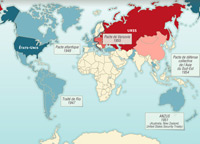
A bipolar world 1947-1991
Video extract
The ideological and strategic positions taken by the USSR and the USA led to the division of large sections of the world into alliances with one or the other of the Great Powers. This bipolar situation remained in place despite the emergence of the Non-Aligned Movement.
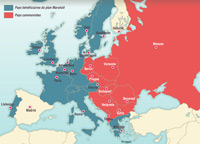
Europe is divided in two after the Second World War
Video extract
Europe was the principal theatre for ideological warfare between the Soviet Union and the United States. It was divided into two separate blocs by what Winston Churchill called the "Iron Curtain".
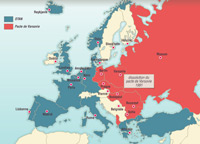
Military alliances in Europe 1949-1991
Video extract
Faced with threats from the Soviet military powers, the Western European nations and the United States were convinced that they had to negotiate and sign a military alliance in April 1949: the North Atlantic Treaty. The USSR and the popular democratic states in Europe countered this move with the Warsaw Pact which was signed in 1955.
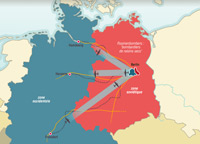
The Berlin Crisis (1948-1949)
Complete video
On 24 June 1948, following a decision by the West to introduce a single currency inside their occupied zones, Stalin launched a coup de force by setting up a tight blockade to prevent the delivery of essential supplies to the 2 million inhabitants of West Berlin.
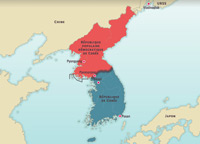
The Korean War (1950-1953)
Video extract
The Korean war cost many lives, but neither side could claim victory. It ended with the long-term division of the Korean Peninsula into two separate states.
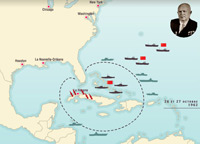
The Cuban missile crisis
Video extract
The deployment on the island of Cuba of Soviet missiles which could reach almost the entire territory of the United States brought the world very close to an outbreak of nuclear war in October 1962.
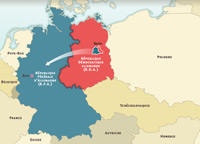
The construction of the Berlin Wall
Video extract
During the night of 13 August 1961, thousands of soldiers were deployed to supervise the installation of fences and barbed wire around the Western perimeter of Berlin in order to prevent people from fleeing the Eastern European countries for the "free world". Before long, West Berlin was surrounded by a 155-kilometre long wall.
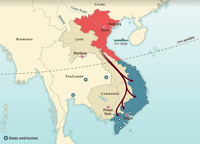
The Vietnam War
Video extract
To avoid the spread of Communism to all regions of Vietnam and neighbouring countries, the United States provided support for Saigon in its conflict with Hanoi. Despite its considerable superiority in terms of men and equipment, the US Army’s involvement was a failure and Vietnam became a unified Communist state.
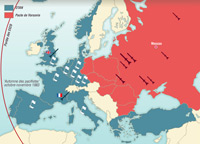
The Euro-missile Crisis 1977-1987
Video extract
In 1977 the USSR installed its new SS20 medium-range missiles in Europe, which led to a new period of tension between the East and West and sparked a huge series of peace movements.


